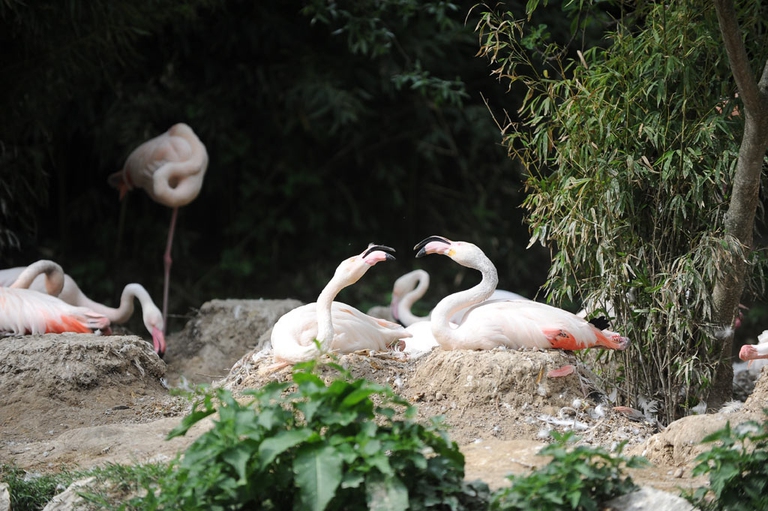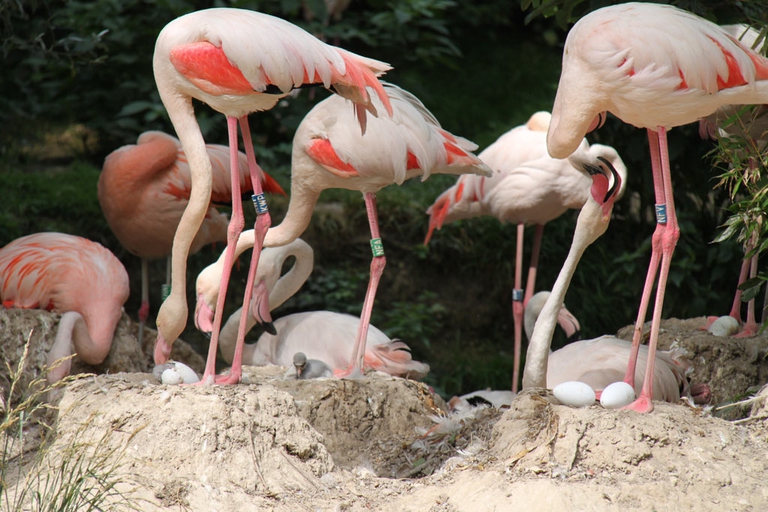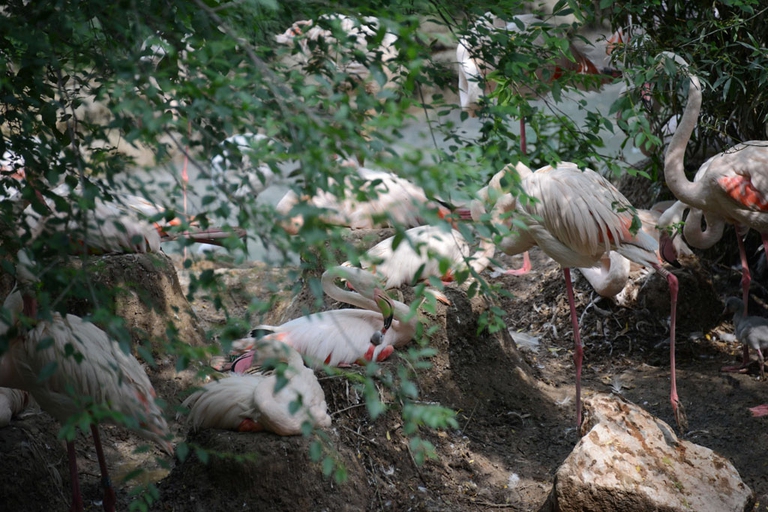
Our species took its first steps in a world covered in trees. Today, forests offer us sustenance, shelter, and clean the air that we breathe.
The first chick of the season of Italy’s most populous colony of greater flamingos (Phoenicopterus roseus) has hatched at Parco Natura Viva in Bussolengo, in the province of Verona, Italy. This year the park registered a record of eggs laid – more than 40. Many other chicks will soon hatch as this spring the couples
The first chick of the season of Italy’s most populous colony of greater flamingos (Phoenicopterus roseus) has hatched at Parco Natura Viva in Bussolengo, in the province of Verona, Italy. This year the park registered a record of eggs laid – more than 40. Many other chicks will soon hatch as this spring the couples of flamingo have laid their eggs almost in synchrony.
“This little chick will stay in its nest for the next 6 or 7 days, until it will be able to stand on its own,” said Camillo Sandri, veterinarian at Natura Viva Park. “Both parents will take care of it, feeding it and guiding it”.
The nests of greater flamingos are built with mud and loose dirt by adult individuals to protect chicks from water, and can reach up to 40 centimetres in height. When born, flamingo chicks are white, almost grey, but will turn pinkish in a few months.
Greater flamingos started nesting again in Italy in the early 1990’s and today they are mostly found in Sardinia and at the mouth of River Po. “There are about 15,000 couples,” explains Sandri. “However, they must face many threats, including stray dogs that prey on their nests and habitat loss”.
Siamo anche su WhatsApp. Segui il canale ufficiale LifeGate per restare aggiornata, aggiornato sulle ultime notizie e sulle nostre attività.
![]()
Quest'opera è distribuita con Licenza Creative Commons Attribuzione - Non commerciale - Non opere derivate 4.0 Internazionale.
Our species took its first steps in a world covered in trees. Today, forests offer us sustenance, shelter, and clean the air that we breathe.
Poachers in Africa are encroaching on wildlife land and killing rhinos in travel hot spots now devoid of visitors due to the coronavirus pandemic.
Actor and environmental activist Leonardo DiCaprio has contributed two million dollars to a fund to protect Virunga National Park in Congo from threats such as terrorism, the coronavirus and poaching.
For the first time in seventeen years, Iceland’s two main whaling companies won’t resume whale hunting. The announcement concerns this year’s season but could carry into the future.
The relationship between the coronavirus and wildlife is complex: while the pandemic may lead to a reduction in the illegal trade in wild animals, it may also encourage it in other respects.
The largest coral reef in the world is severely threatened by climate change, but researchers are developing strategies that could contribute to saving the Great Barrier Reef.
NGO Free the Bears has opened a mountain sanctuary for moon bears in Laos. With the government’s help, it aims to close all bile farms by 2022.
Seychelles have extended its marine protected area, which now covers over 400,000 square kilometres, an area larger than Germany.
The tapir was reintroduced into Brazil’s Atlantic Forest, the country’s most at-risk ecosystem. The species can play a key role in the forest’s recovery.










